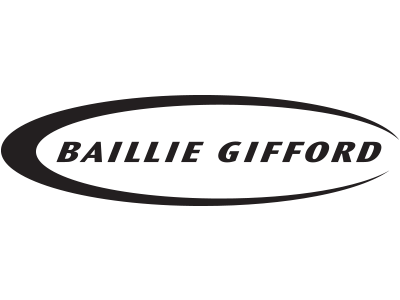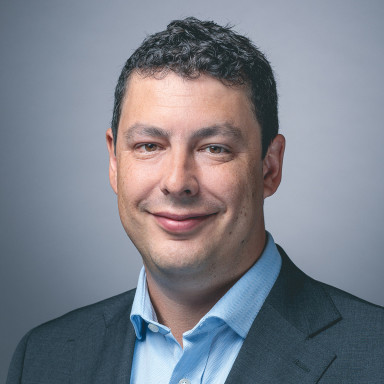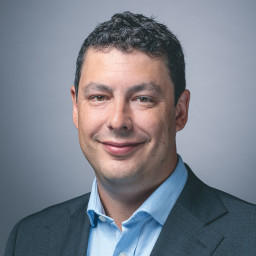The focus of this fund is on providing a resilient level of income for today and into the future
The fund places an emphasis on responsible investing and all investments are made on the basis that they are compatible with a sustainable economy
We think this is a good option for diversified exposure to stock and bond markets across the globe, with a focus on income provision
The fund has recently been added to our Wealth Shortlist of funds chosen by our analysts for their long-term performance potential
How it fits in a portfolio
Baillie Gifford Sustainable Income invests across three broad investment areas: shares, real assets (such as property) and bonds. The aim of the fund is to increase the income paid to investors by more than the increase in the consumer prices index (CPI - a measure of inflation) over the long term. The fund focuses on providing a resilient income over time, meaning that while the income provided by this fund may not be the highest available, it can be expected to be more consistent.
The fund invests evenly between the three areas noted above, but the real assets section is made up of companies listed on the stock market, meaning most of the fund is invested in shares.
The income focus means that Baillie Gifford’s growth investment style is less pronounced than in some of their other multi-asset funds. We think this is more appropriate for a fund focused on income and should mean that this fund doesn’t exhibit the same swings in performance that other Baillie Gifford funds have seen in recent years. Although of course, there are no guarantees.
We think the fund could be used to provide diversification to an investment portfolio focused on growth or be a useful addition to a portfolio focused on providing an income.
Manager
James Dow, Nicoleta Dumitru, Lesley Dunn and Steven Hay are the fund’s managers. They each have different areas of investment specialism and are managers of other funds at Baillie Gifford.
James Dow is Co-Head of Global Income and also manages the Baillie Gifford Global Income Growth fund. Lesley Dunn is Head of the Credit Team and also manages the Baillie Gifford Strategic Bond fund. Nicoleta Dumitru is a multi-asset investment manager, specialising in real assets and specifically infrastructure investments. Steven Hay is Head of Income Research and also manages the Baillie Gifford Managed fund. His focus is on fixed income (bonds).
The managers all have significant and relevant experience within their areas of specialism, as well as lots of experience of working at Baillie Gifford. Of the four, Dunn joined Baillie Gifford most recently in 2016.
The managers also make use of the wider teams that they work with on other funds at Baillie Gifford to help with idea generation and wider economic views. This means that the fund has a wide range of views and inputs, and therefore key person risk is reduced.
Process
There are three broad categories of investments in the fund: shares, real assets and bonds. All of the managers look for investments that will contribute to the income paid by the fund, so that it’s not reliant on any one asset class to generate its income. This diversification helps the level of income to be more consistent over time. That said, it’s expected the bonds will be the largest contributor to the fund’s income over time.
The fund invests globally, and is diversified across 200-300 investments. While there is debate and challenge across the team, the individual managers are given authority to select investments from their specialist areas for inclusion in the fund.
The shares portion of the fund is globally invested in large companies that the team expect to be able to pay and grow their dividend a long way into the future. This includes some companies in emerging markets, which are higher risk.
The bonds portion is currently largely made up of corporate bonds and will often include exposure to high yield and emerging market bonds. These bonds usually pay a higher income, however they’re also higher risk.
The real assets section differentiates the fund from some of its peers and is focused on infrastructure and property. The team invests in both individual companies and investment trusts in each of these areas. These companies typically have revenues that are linked in some way to inflation, for example property rents that are increased in line with inflation each year. Because of the more consistent and predictable earnings that these companies achieve, their long-term performance is usually more consistent. That said, as company shares they can be volatile at times too.
The amount invested in each asset changes over time. The team’s long and shorter-term views on the world influence where they invest. However, over the long term the fund will have roughly a third of its assets in each of the sections outlined above.
At the end of March 2024, the fund had 35.8% of its assets in shares, 27.7% in real assets and 35.0% in bonds, with the remainder in cash.
The fund applies a screening process to remove companies from their universe that are subject to UN Security Council sanctions or are non-compliant with the UN Global Compact initiative. They also screen out companies that have revenues above particular thresholds coming from fossil fuel extraction and production, thermal coal distribution, tobacco production, controversial weapons and armaments.
As part of their company assessments, the managers also consider a number of different sustainability metrics and assign each company an overall score. This helps them to compare different companies’ sustainability credentials. Those that are considered leaders within their sector are preferred.
This sustainability analysis is considered alongside their wider due diligence, which means that the managers don’t always have to invest in the highest scoring companies from a sustainability perspective. However, they won’t invest in the lowest scoring companies, regardless of how good they may be on other metrics.
The managers have the flexibility to use derivatives, which adds risk.
This fund holds shares in Hargreaves Lansdown plc.
Culture
Baillie Gifford is an independent private partnership founded in 1908. It's owned by partners who work full time at the firm. This ownership structure means senior managers have a vested interest in the company, and its funds, performing well.
We think this has helped cultivate a culture with a long-term focus, where investors' interests are at the centre of decision making. We also like that fund managers are incentivised in a way that aligns their interests with those of long-term investors and should retain talented managers.
Of the four managers for this fund, Dow and Dunn are both partners of the business.
ESG Integration
This fund is one of Baillie Gifford’s sustainably labelled funds, meaning that ESG considerations are a meaningful part of how they assess investments for the fund.
The fund changed named from Baillie Gifford Multi Asset Income to Baillie Gifford Sustainable Income on 31 March 2023. This reflects an increased commitment for investments in the fund to be environment, social and governance (ESG) led. The team ask the key question ‘is this investment compatible with a sustainable economy?’ for every investment. The answer must be yes for them to invest.
Baillie Gifford's funds are run with a long-term investment horizon in mind – they see themselves as long-term owners of a business, not short-term renters. So, assessing whether society will support, or at the very least, tolerate, the business model over the long term, and whether management will act as good stewards of shareholders' capital is an important part of the investment process. Dedicated ESG analysts sit with and report into their respective investment teams, and the firm's ESG efforts are supported by a dedicated climate specialist team, an ESG Services team (responsible for voting operations and ESG data) and an ESG Client team (responsible for ESG-related client communications). Individual investment teams are responsible for voting and engagement for the companies they invest in. Investment in controversial weapons is prohibited across the firm.
The firm reports all its voting decisions and provides rationale in situations where it voted against management or abstained, in a detailed quarterly voting report. There is also a quarterly engagement report which details the companies engaged with, and the topic discussed, and further engagement case studies are available on the Baillie Gifford website. All this information is brought together in the firm's annual Stewardship Activities report.
While this fund has a greater level of ESG integration than others at Baillie Gifford, this is not necessarily true compared to peers. There are companies and industries that the fund invests in which some responsibly focused investors might consider to be sinners. An example could be electricity generation companies that are still using coal as part of their energy mix. They are included in the fund because these companies have a plan to significantly reduce their use of coal in electricity generation. And to support the energy transition to greater use of electricity over fossil fuels (electric cars for example), these companies are important for future adoption of technologies that will reduce carbon output. From an investment perspective, this could boost long-term earnings.
Cost
This fund has an ongoing annual charge of 0.56%. We think this is a reasonable price compared to other funds in the sector. The HL account charge of up to 0.45% per year also applies, except in the HL Junior ISA, where no HL account charge applies.
Please note that charges are taken from capital. This can increase the income paid by the fund, but it might reduce the potential for capital growth.
Performance
The fund has performed better than the IA Mixed Investment 40-85% sector average since launch in September 2018, having returned 31.37%* versus the sector average of 25.79%. Past performance is not a guide to the future.
Since the fund launched, it’s been less volatile than the average fund in the sector. It’s also not lost as much value during market falls, but it hasn’t kept pace during market rises. This makes sense given the focus of the fund is on generating income and our analysis suggests it’s reasonable to expect this type of performance over the long term.
The income paid by the fund has increased since launch, however it’s increased by less than the CPI. Part of the reason for this is the impact of covid in 2020 when company dividends were significantly reduced. In some cases, the dividends were banned by governments if companies had received government support to help cover the costs of lockdowns. In that environment, it’s reasonable to expect the level of income paid by the fund to fall and this wasn’t the only fund impacted.
Inflation in 2022 and 2023 was also significantly higher than long-term expectations. The long-term aims of the fund are based on CPI being at or around the Bank of England’s target level of 2%. It’s therefore reasonable that the income paid by the fund didn’t increase in line with inflation when it was much higher.
We expect the fund to achieve its aim of increasing income in line with CPI inflation over the long term.
Over the 12 months to the end of March, the fund returned 6.39%, underperforming the sector average return of 10.14%. Some of the largest and fastest growing technology based companies have boosted stock market performance. While this fund has investments in Microsoft and Apple, it doesn’t invest as much as the market, partly because some of these companies do not pay dividends. Not Investing in these companies has detracted from performance compared to peers.
The fund’s investments in infrastructure and property have also struggled over the period. This is because the income paid by bonds has been higher, which has reduced the demand for infrastructure and property companies and led to weaker performance.
On the positive side has been an investment in Danish pharmaceutical manufacturer, Novo Nordisk, which has benefited from the growth in its weight loss drug Wegovy. Many of the bond investments have also added value.
The fund had a historical yield of 3.89% as at 31 March 2024. Income isn’t guaranteed, and yields aren’t a reliable indicator of future income.
Annual percentage growth
31/03/2019 To 31/03/2020 | 31/03/2020 To 31/03/2021 | 31/03/2021 To 31/03/2022 | 31/03/2022 To 31/03/2023 | 31/03/2023 To 31/03/2024 | |
|---|---|---|---|---|---|
Baillie Gifford Sustainable Income | -3.98% | 21.15% | 7.44% | -3.89% | 6.39% |
IA Mixed Investment 40-85% | -8.00% | 26.54% | 5.42% | -4.58% | 10.14% |


